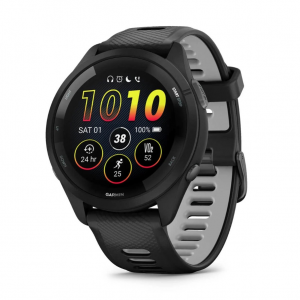
Walking is a free and accessible way to increase your step count, spend time outdoors, get into nature and improve various components of fitness. So why is it then, that so many of us struggle to clock up the daily steps?
The simple answer — we’re busy, and we happen to be right in the middle of winter as we start the new year, which means walking outdoors might feel less inviting than, say, walking on one of the best treadmills for home workouts.
Regardless, I’ve made it my mission to walk outdoors at least 5km every day for the last few months, made easier by the demands of owning a hyperactive four-year-old dog named Daisy.
Whether or not you have a dog in tow, read on to find out why I’ve been doing it, the benefits for the body and mind, and how you can, too.
How long is a 5K to walk?
5km equates to 3.1 miles, and unless you’re into hiking or power walking, a 5K walk will take roughly 45 to 60 minutes, depending on your speed and fitness levels.
I usually run a 5K in around 25 minutes, so it has been a welcome relief to slow things down and take my time without glancing at the splits on my Apple Watch Series 9.
Sometimes, I walk while listening to a podcast, and other times, I incorporate mindful walks, with or without sound. Regardless of what I do when I walk, there’s always one thing I don’t do — count my steps.
Here’s how my walking routine has helped my health.
I focus less on the outcome and more on the moment
We hear mindfulness gurus spouting about “living in the present moment” a lot, but the reality is much harder.
That said, without a particular fitness-focused goal in mind during a walk (although goals are always useful), I’m more able to stay in the moment without clock-watching or step counting. It's a welcome relief, given that my job in the fitness industry means I'm constantly living, breathing and speaking workouts.
I feel calmer

Personally, I love nothing more than walking in the rain, so come rain or shine, I’ve been ticking off daily walks and making it a non-negotiable part of my routine. It’s helped me build mental stamina by spending more time in nature.
Did you know that some research has shown time spent in nature can boost creativity and improve mood and wellbeing? Even with a stressful day ahead or behind me, taking an hour out of the day for a walk has improved short-term mental fortitude, even if it’s temporary.
A few years back, I was diagnosed with combined ADHD, and life on the neurodivergent scale can be chaotic, mentally and physically. Whenever I feel like I’m approaching burnout, a walk can really help settle feelings of overwhelm or anxiety, and I've found it incredibly calming for my nervous system.
It’s a form of meditation for me
Meditation comes in all forms, and walking meditation is a fantastic way to access it if the concept feels alien to you. I can’t keep still long enough to settle into a “traditional” meditation, so walking is my favorite way to do it.
Mindful walking — like this walking meditation — can help you dial into what you can see, smell and hear, just like any other form of meditation can.
I didn’t count steps — here’s why
Closing your Apple rings, or any fitness tracker equivalent, is a motivator for sure, and has its uses. However, ever felt the pressure to quantify all the movement you do? Me too. That’s why I love the Oura Ring feature called Rest Mode, allowing you to focus on recovery and switch off certain aspects of data when you're feeling overwhelmed.
Forget 10,000 steps — it isn’t the magic number we should all be aiming for, according to newer research (shock, the number actually came from a clever marketing campaign), so you can benefit from cumulative movement throughout the day instead. And even 7,000 steps pack benefits.
Cumulative energy expenditure, outside of “dedicated” exercise, eating and sleeping, sits under the term NEAT (Non-Exercise Activity Thermogenesis) — it’s a great way to burn calories by switching up your daily routine. This means you can boost your metabolism and keep it ticking along nicely just by standing and walking more!
Stamping a number on your walk can take away from the enjoyment of it, so instead, when you can, try to focus on how the walk itself makes you feel, plus adding more movement to your day in general.
I’ve found this helps me enjoy movement more and allows me to switch off, but I can still wear my watch when I choose to, and know my data will sync in the background if I decide I want to check it at the end of the day.
More from Tom’s Guide
- Calisthenics coach says this is the 20-minute workout you need to build full-body strength and boost fitness
- Is walking backward good for you? We asked an expert
- I tried this 30-minute indoor walking workout — here's why it's perfect for the holidays
Sign up to get the BEST of Tom's Guide direct to your inbox.
Get instant access to breaking news, the hottest reviews, great deals and helpful tips.

Sam Hopes is a level 3 qualified trainer, level 2 reiki practitioner and senior fitness writer at Tom's Guide. She is also currently undertaking her Yoga For Athletes training course. Sam has written for various fitness brands and websites over the years and has experience across brands at Future such as Live Science, Fit&Well, Coach, and T3.
Having worked with fitness studios like F45 and Virgin Active, Sam now primarily teaches outdoor bootcamps, bodyweight, calisthenics and kettlebells. She also coaches mobility and stretching-focused classes several times a week and believes that true strength comes from a holistic approach to training your body.
Sam has completed two mixed doubles Hyrox competitions in London and the Netherlands and finished her first doubles attempt in 1:11.
-
Joey121215 You didn't get rid of your goal and you do have a fitness goal when you're walking. You've just subbed 10k steps for 5km. You literally say it in the opening of this article: "I’ve made it my to walk outdoors at least 5km every day for the last few months”Reply
Walking 10k steps takes me 8km without fail, whether or not I say "my goal today is 10k steps" or "my mission today is 8km" the end result is the exact same LMAO
You've just traded one fitness goal for another and relying on the old school method of tracking your fitness progress instead of using a screen and fitness monitor to do it for you
Stallone and Arnie never used an oura ring or apple watch either, they just set time or distance and did it, same thing as our ancestors, congrats on figuring out the method of fitness from 20 years ago I guess lol










